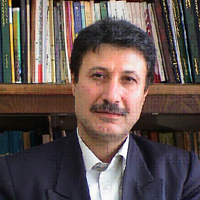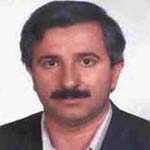Comparative assessment of urban smart growth indicators in 6 areas of 6th region, Tehran
The pattern of urban growth in the years after World War II has been sprawl that caused horizontal expansion and negative consequences for cities. For example loss of agricultural land and orchards, drain the old tissues from the crowd, problems of service to citizens, environmental problems and pollution and etc.Now the 6th district of Tehran as a central part of the city faced with challenges like environmental problems, reduce neighborhood identity, population decline and etc. Therefore, in this study Was selected principles of urban smart growth for reducing problems and increase the efficiency of this region. The aim of this study was initially measure density / distribution degree in the region 6 of Tehran and then analyzed and adjusted 6 indicators urban smart growth theory (density, mixed use, public transportation, open and green spaces, reconstruction of old part of cities and sense of place) by using Analytical Hierarchy Process (AHP).
This research is applied and the research methodology is descriptive- analytical. The data collection tool is library documents and survey. The statistical population was residents of district 6 that by using Cochran formula was calculated total 160 questionnaires for residents and 30 questionnaires for experts.
Environmental damage, pollution, swallowed agricultural land around cities, increasing immigration, the separation of work place from residence, increased urban travels, increased use of private cars on day trips, increased fuel consumption, low density urban texture, increased costs for municipal services to marginalized regions, being inconsistent and unbalanced access to utilities in the city and consequently, social and cultural problems is the problem of urban sprawl. As noted above, in response to issues and crises of cities in the 1970s and 1980s, several theories have been proposed Such as sustainable development, environmental justice, new urbanism, Green Urbanization in the 1990s and more recently smart growth theory in planning system in 1990s. Smart growth arose as a response to the urban sprawl problems and the negative consequences in U.S and it defines the principles for dense development and redevelopment within urban areas and reduce the uncontrolled and urban sprawl. Smart growth Principles and implementation of operational strategies this approach, seeking to take advantage of social, economic, environmental, and physical and they attempt for making balance between these dimensions in cities. According to Walmesley, Smart Growth is kind of planning that with use of social, economic and environmental factors led to development to established areas and equipped with the necessary infrastructure and areas that could be equipped with the required facilities. According to the 6th district of Tehran, considered as central, old part and the heart of Tehran metropolis we can use this theory to reduce problems of region. After Studies on the theory and principles of urban smart growth, in this study, we used the six principles that were common to most definitions and perspectives and fits well with the characteristics and problems in the study area.The pattern of urban growth in the years after World War II has been sprawl that caused horizontal expansion and negative consequences for cities. Urban Smart Growth includes six common characteristics: 1 – it limits the peripheral development. 2 – encourages land use with high-density. 3 - focuses on mixed zoning. 4 –reduces trips that are personal transportation.
5 – Emphasizes on the reconstruction and revitalization of older areas. 6 -to protecting open spaces (Down, 2005,368).In this study, first of all, the physical form of the 6th district of Tehran was measured by calculating the Shannon entropy formula and 0.862 obtained and Ln (6) is equal to 1.79. So the physical development is considered as a dense region because the obtained value tends towards compactness. Next, we used urban smart growth indicators (density, mixed use, public transport, conservating green spaces, development towards existing communities and rebuild old parts (old texture) and a sense of place) to assess the 6 areas of 6th district of Tehran and with using the analytic hierarchy process (AHP), all areas were assessed. We were assigned the same weight for six indicators because of survey of experts. Finally, in comparative assessment was found that 3th area of 6th region was known as compatible area with urban smart growth indicators.
In the present study, we tried to evaluate physical and social parameters of the key principles of smart growth with equal weight zones and integrated for selected case studies. This evaluation makes be identified weaker areas of a region and the end of study we suggest the appropriate enforcement mechanisms for weakness of them.The findings show that physical form of 6th district is compact and in comparative assessment was found that 3th area of 6th region was known as compatible area with urban smart growth indicators. Rating areas are as follows: 5th area, 6th area, 1th area, 2th area, 4th area. Our results show that smart growth principles aren’t in urban plans, existing condition of neighborhoods and urban regions, normally continuously. In most areas, the density has led to greater access to public transport but these areas act poorly in terms of preserving green spaces, mixed used in neighborhoods and sense of place because of excessive density and transportation cause congestion and disruption in neighborhood life and they reduce sense of place.So defining the appropriate level of assessment criteria and coordination with each other in the urban hierarchy In particular, the localization the size of these criterias, will yield better results.
- حق عضویت دریافتی صرف حمایت از نشریات عضو و نگهداری، تکمیل و توسعه مگیران میشود.
- پرداخت حق اشتراک و دانلود مقالات اجازه بازنشر آن در سایر رسانههای چاپی و دیجیتال را به کاربر نمیدهد.




